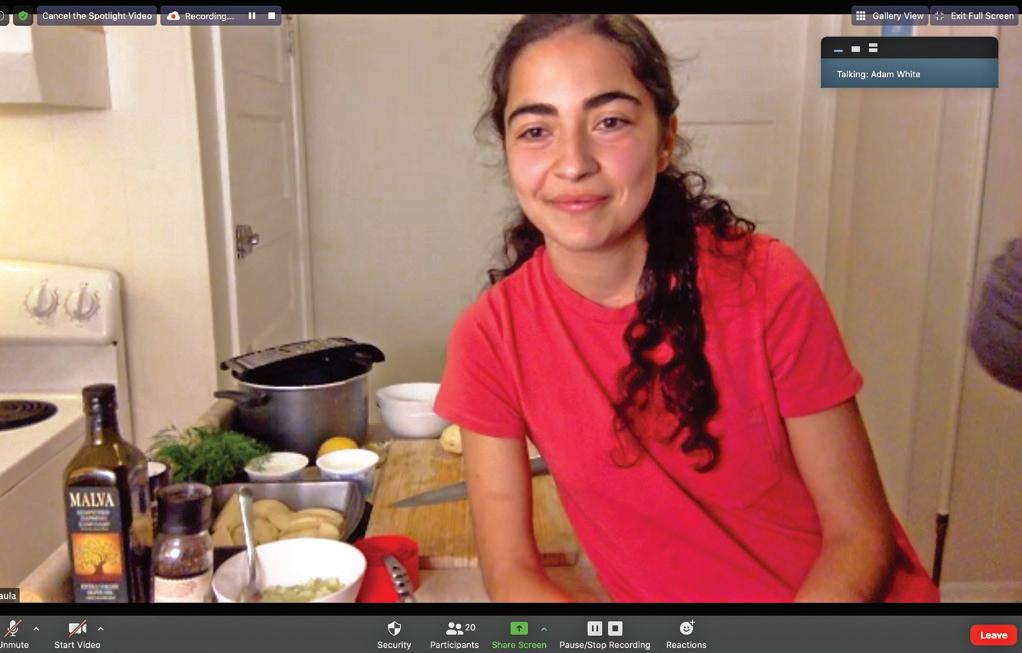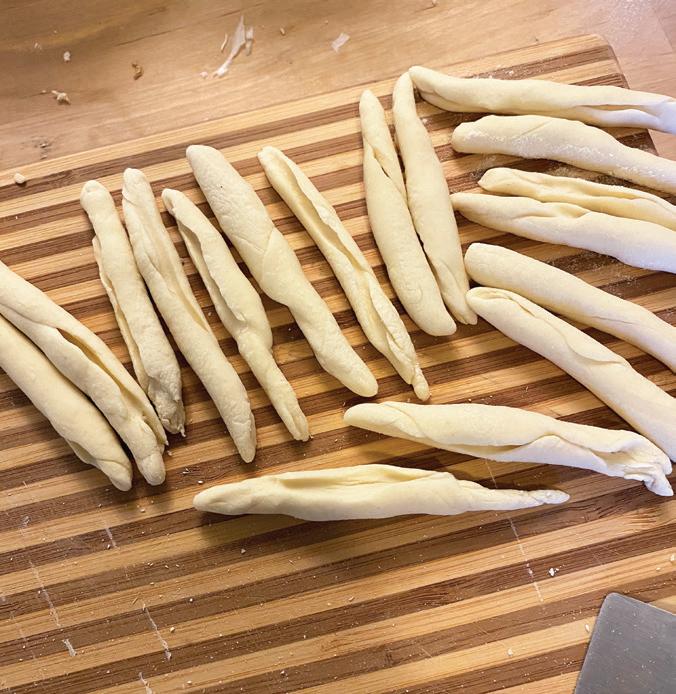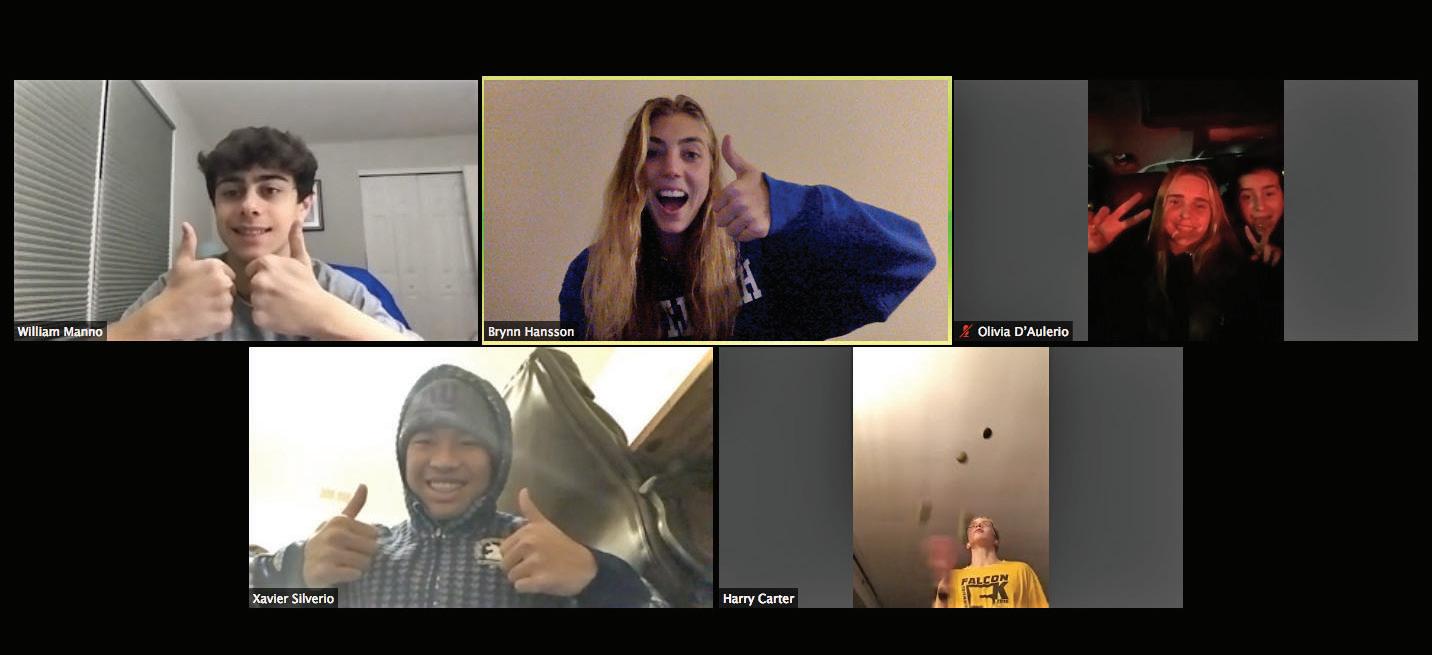
7 minute read
Staying Connected
COMMUNITY ENGAGEMENT TAKES CENTER STAGE
Making personal connections with one another, learning and experiencing new things, stepping outside of our comfort zone — it is what we do best at The Hun School. These ideals and values have been intertwined into our curriculum, programming, and community since the very beginning, but when the School shifted to virtual learning last spring and hybrid learning this year, creating ongoing opportunities that ensured those connections continued was a top priority. The alarming rise in anxiety and depression among school-aged children was also an impetus for creating a strong community engagement program.
Advertisement
Community engagement events happen daily throughout the school week, with occasional weekend opportunities, and are offered in a variety of avenues. The most enjoyable part for students and faculty alike is the freedom that comes with creating these activities.
Learned a new recipe and want to host a virtual cooking demonstration? Need a space to discuss top news stories? Starting a new club? Interested in hearing a guest speaker? These are all examples of what a community engagement event may look like.
Interim Director of Community Engagement Olivia Albanese ’13 notes that what makes this program so fruitful is the menu of events that are offered to students on a daily basis, giving every student, teacher, alumnus, parent, or administrator a chance to participate in something that is relatable to them.
Ms. Albanese explained that in a time of isolation, it is critical to provide safe and welcoming spaces for students and faculty to connect and unwind and because of community engagement activities, the School has been able to do just that.
Hungry for Connection?
TRY RAIDER’S TRAVELING KITCHEN!
From Greece to Australia to Italy, Raider has been doing quite a bit of “traveling” this year. Through the new community engagement event, each month Raider’s Traveling Kitchen takes Hun students and their families on a culinary journey through a cooking demonstration. Each cooking demonstration is led by an international professional chef and participants are given one ingredient shipped directly from the featured country.
Allayna Garrett, associate director of Global and Immersion Programs explained that Raider’s Traveling Kitchen was created to bring travel to the students.
“Over the past couple of months, families have picked up a ton of new hobbies to do together and cooking has been one of the main ones,” Ms. Garrett said. “So, we thought since we can’t travel, what better way is there to introduce a culture than by learning how to prepare a meal authentic to that place?”
The first stop of Raider’s international tour took him to Greece where Chef Paula of Atlas Workshops (The Hun School’s educational partner) taught families how to make authentic meze, meaning “small bites.” Participants made tzatziki with Greek-style roasted potatoes with oregano shipped directly from a garden in Greece. Nethra Velanki ’24, a student who has attended every session of Raider’s Traveling Kitchen, notes that her favorite “trip” thus far has been to Calabria.
Next, Raider took a trip down under to Australia to learn how to make the traditional Anzac biscuit. While baking, participants learned about the historical context of the Anzac biscuit. Associated with the Australian and New Zealand Army Corps in World War I, the biscuits, containing only non-perishable ingredients, were made and sent to soldiers abroad. The biscuits were paired with another Australian favorite: Vegemite.
In December, Raider traveled to southern Italy’s Calabria region to make fresh pasta with Calabrian pesto. This class was led by Riccardo and Gianfranco, two professionally trained chefs who work at a farm-to-table restaurant in Calabria.
Not only did families master the art of pasta making and learn the secret to preserving a perfect batch of pesto, the two chefs also sprinkled in several history lessons along the way. For example, while most pesto recipes traditionally include pine nuts, Calabrian pesto features bitter almonds. The reason? Pesto actually originated in Genoa, Italy, where pine nuts are frequently grown and harvested; in Calabria, pine nuts are not as easy to find and bitter almonds are far more common.
“I especially enjoyed learning how to make food that I would never know how to make off the top of my head,” Nethra said. “I also thought it was really interesting learning so much about Calabrian culture and all of the subcultures that exist in a country. I have learned so much in such a short time.”



A Gathering Ritual
TEA TIME TUESDAY
A few years ago, Hun students would have never imagined that tea time would be an integral part of their weekly schedules, but with the help of Brynn Hansson, counseling and wellness teacher, this community engagement event is a highlight for students and faculty alike.
Last March, Ms. Hansson quickly recognized that both students and faculty were in need of a space where they could simply be together to share a laugh, unwind, and adjust to the new normal. With that in mind, she jumped on the opportunity to create “Tea Time Tuesday,” a virtual table for all members of the Hun community to gather around, share conversation over their favorite food or drink, and indulge in some much needed relaxation.
Since then, Tea Time Tuesday has met every single week, including throughout the summer, and has evolved into a group of seven students who continuously show up for one another for better and for worse.
“At first, it was just about creating a space outside of the academic day for students to connect with each other and not have to worry about talking about assignments or participating in mandatory activities,” Ms. Hansson said. “It has always been the students’ choice whether or not they want to show up, and since then these students have chosen every week to show up for each other and hold space with one another. Even if they are having a bad day, they show up. They may not even talk, but at least they are there.”
A typical Tuesday night for Tea-Time-goers could involve anything from a heated debate on New Jersey’s best pizza places, to live student performances, to a mini talent show, or even watching Ms. Hansson create an epic taco Tuesday dinner for herself.
Xavier Silverio ’22, a regular at Tea Time Tuesday, joins every week because he knows it’s always a safe place for him to be himself, unwind, and share what’s going on in his world:
“My favorite part about Tea Time Tuesday is the freedom associated with it; we all have the ability to talk about whatever we want without worrying about criticism,” he said. “During Tea Time Tuesday, I always feel relaxed and at peace because I know that everyone participating is facing similar challenges. People never judge or criticize my feelings or thoughts, as we are all joining simply to relax and reflect on what life has to offer.”

Ms. Hansson notes that one addition to Tea Time Tuesday in particular has had a positive impact on the students: hope on the horizon.
“Something new that we have recently started doing is ending every meeting with talking about the goodness on the horizon,” Ms. Hansson said. “Even when things get a little dicey, there is always something good on the horizon. So, we all go around and share a few things that we are thankful for or looking forward to. Sometimes they are really deep and then sometimes they are more lighthearted and that’s always okay.”
For Ms. Hansson, the silver lining throughout the pandemic is the sense of deep connection that she has been able to achieve with students, in a way that might not have been possible given a normal year.
“I think we all really take for granted the amount of socialization we have on a normal school day, and because we aren’t spending lunch in the dining hall, or have our free periods the way we used to, or even have five minutes between classes, it has really left students craving more interaction and deep connections,” she said. “So for me, through these weekly meetings, I have come to understand the perspective of students more than I ever have before. I’ve had the chance to know them in a different way outside of the classroom or the field, so it’s been really nice to step inside their world.”
As for the future of Tea Time Tuesday, Ms. Hansson and the students believe this may be something that lives on when COVID-19 is in our rearview mirror—with future plans including in-person meetings.








